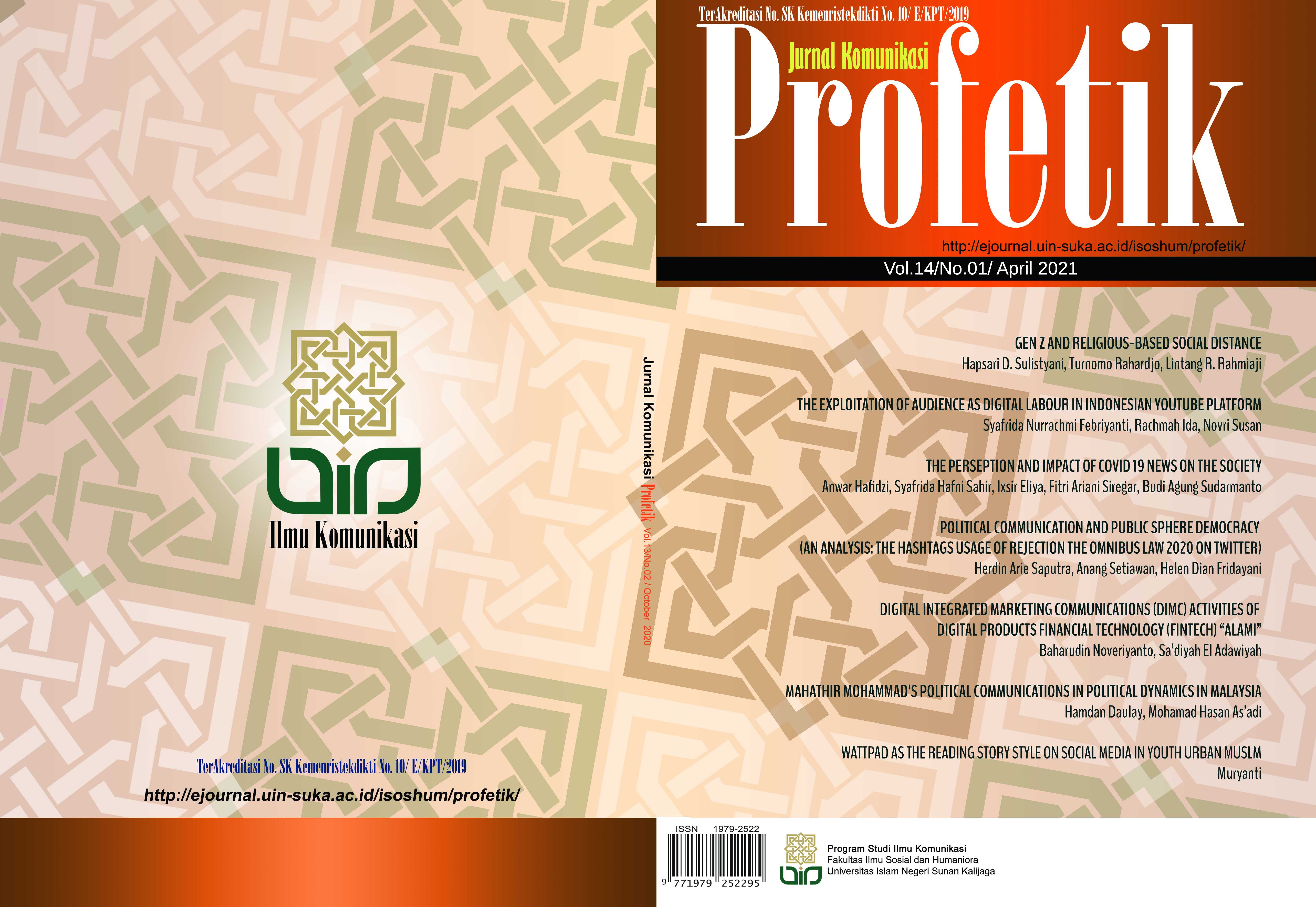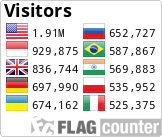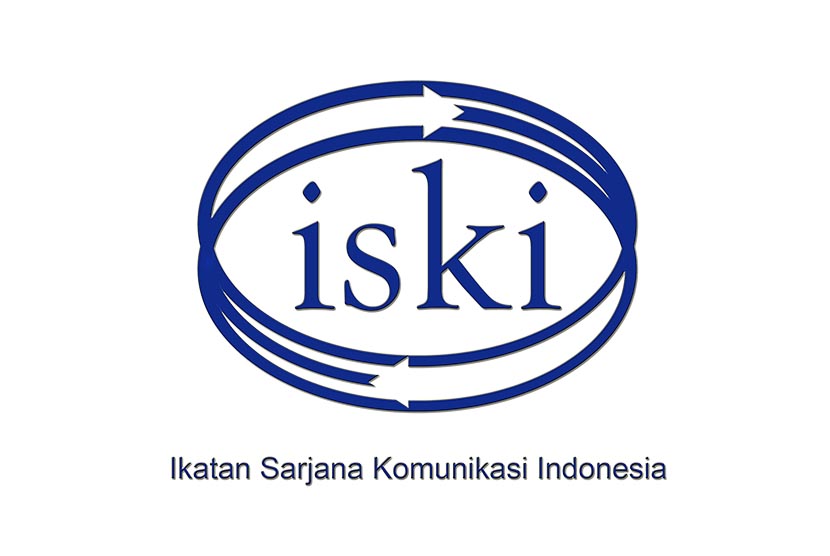LOMBOK WOMAN EMPOWERMENT IN THE DIGITAL ERA THROUGH MANAGING COMMUNITY RADIO AS A MEDIA OF PANDEMIC COMMUNICATION
DOI:
https://doi.org/10.14421/pjk.v14i2.2376Keywords:
Woman Empowerment, Pandemic Communication, Community Radio, Digital Era, Covid-19 PandemicAbstract
Women have some part in the pandemic Covid-19, especially in providing true information. This article tends to describe how Lombok woman empower themselves through managing community radio during Pandemic Covid-19. Related to the role of community radio is increasing especially in providing the true information needed by the public. These women manage the radio community called “Nina Bayan” in North Lombok Regency. This phenomenon is interesting to be studied since the people in this area have been facing long-standing difficulties, from the Lombok earthquake that occurred in 2018 to the Covid-19 pandemic in 2020. The resilience of society, especially women's groups, in facing this difficult situation is to form a media broadcast which is community radio. The purpose of the research is to explore the role and strategy of the radio community “Nina Bayan” in building pandemic communication during the digital era managed by these women. This study uses a qualitative approach to describe the phenomenon of the study in depth and detail. Research data obtained from interviews (three interviewees: founder, program manager, announcer or teacher), observations and literature review to strengthen the study in theory and methodology. The results show that (1) Dissemination of pandemic communication was packed through the communication media of the radio based on community needs and local wisdom so that it was easily accepted and accessed by the community. (2) The strategy carried out by the radio community to survive amid the challenges of the broadcasting world is capacity building for radio managers and broadcasters, using an inclusiveness approach, creating programs based on community needs and broadcasting digitalization.
Downloads
References
Akbar, S. (2021). Media Komunikasi Dalam Mendukung Penyebarluasan Informasi Penanggulangan Pandemi Covid-19. Majalah Semi Ilmiah Populer Komunikasi Massa, 2(1), 73–82.
Atika, A., Lubis, D. P., & Rangkuti, P. A. (2017). Tingkat Pemenuhan Informasi Petani Melalui Radio Komunitas. Jurnal Aspikom, 3(3), 435–446.
Biagi, S. (2010). Pengantar media Massa (Media/Impact: An Introduction to Mass Media). Jakarta: Salemba Humanika.
Cinelli, M., Quattrociocchi, W., Galeazzi, A., Valensise, C. M., Brugnoli, E., Schmidt, A. L., Zola, P., Zollo, F., & Scala, A. (2020). The COVID-19 Social Media Infodemic. Scientific Reports, 10(1), 1–10.
Correia, R., Vieira, J., & Aparicio, M. (2019). Community Radio Stations Sustainability Model: An Open-Source Solution. Radio Journal: International Studies in Broadcast & Audio Media, 17(1), 29–45.
Cresswell, J. (2014). Research Design: Qualitative, Quantitative, and Mixed Methods Approaches (4 Ed). California: Sage Publication Inc.
Diers-Lawson, A., Johnson, S., Clayton, T., Kimoto, R., Tran, B. X., Nguyen, L. H., & Park, K. (2021). Pandemic Communication: Information Seeking, Evaluation, and Self-Protective Behaviors in Vietnam and the Republic of Korea. Frontiers in Communication, 6, 1–22.
Dwiana, R., & Wahyuni, H. I. (2013). Radio Komunitas untuk Pemberdayaan Perempuan. JURNAL IPTEKKOM (Jurnal Ilmu Pengetahuan & Teknologi Informasi), 15(2), 117–134.
Eddyono, A. S. (2008). Sosiologi Media: Studi Kasus terhadap Eksistensi Sebuah Radio Komunitas di Yogyakarta. Jurnal Madani, 9(3), 283.
Ewart, J., & Dekker, S. (2013). Radio, Someone Still Loves You! Talkback Radio and Community Emergence During Disasters. Continuum, 27(3), 365–381.
Fraser, C., & Estrada, S. R. (2001). Buku Panduan Radio Komunitas. Jakarta: UNESCO Jakarta Office.
Gambaro, M. (2013). Some Economics of New Media Content Production and Consumption, and Strategic Implication for Media Companies. In Handbook of Social Media Management (pp. 49–58). Springer.
Hadi, A. P. (2003). Radio Komunitas Sebagai Media Penyiaran Alternatif untuk Pemberdayaan Masyarakat Perdesaan. Jurnal Agrimansion, 3(2), 202–212.
HarianNusa. (2021). Menteri PPPA Dialog dan Resmikan Radio “Nina Bayan” di Lombok Utara. Hariannusa.Com. https://hariannusa.com/2021/04/16/menteri-pppa-dialog-dan-resmikan-radio-nina-bayan-di-lombok-utara/
Jankowski, N. W., & Prehn, O. (2002). Community Media in the Information Age: Perspectives and Prospects. Cresskill, NJ: Hampton Press.
Kemenpppa. (2021). Peranan Perempuan dalam Literasi Digital di Masa Pandemi. Kemenpppa.Go.Id. https://www.kemenpppa.go.id/index.php/page/read/29/3118/peranan-perempuan-dalam-literasi-digital-di-masa-pandemi
Kent, M., & Ellis, K. (2015). People With Disability and New Disaster Communications: Access and The Social Media Mash-Up. Disability & Society, 30(3), 419–431.
Lawson-Borders, G. L. (2009). Media Organizations and Convergence: Case Studies of Media Convergence Pioneers. New York Routledge.
Leminen, S., Huhtala, J.-P., Rajahonka, M., & Westerlund, M. (2016). Business Model Convergence and Divergence in Publishing Industries. In Media Convergence Handbook-Vol. 1 (pp. 187–200). Springer.
Manyozo, L. (2009). Mobilizing Rural and Community Radio in Africa. Ecquid Novi, 30(1), 1–23.
Masduki, M. (2004). Perkembangan dan Problematika Radio Komunitas di Indonesia. Jurnal Ilmu Komunikasi, 2(2), 145–157.
McQuail, D. (2010). Mass Communication Theory (6th Edition). Sage Publication.
Mhagama, P. (2016). The Importance of Participation in Development Through Community Radio: A Case Study of Nkhotakota Community Radio Station in Malawi. Critical Arts, 30(1), 45–61.
Mikos, L. (2016). Digital Media Platforms and The Use of TV Content: Binge Watching and Video-On-Demand in Germany. Media and Communication, 4(3), 154–161.
Moleong, L. J. (2018). Metodologi Penelitian Kualitatif Edisi Revisi. Bandung: Remaja Rosdakarya.
Nielsen. (2016). Radio Masih Memiliki Tempat di Hati Pendengarnya. Nielsen.Com. https://www.nielsen.com/id/en/press-releases/2016/radio-masih-memiliki-tempat-di-hati-pendengarnya/
Nirmala, Y. (2015). The Role of Community Radio in Empowering Women in India. Media Asia, 42(1–2), 41–46.
Pavarala, V., & Malik, K. K. (2007). Other Voices: The Struggle For Community Radio in India. SAGE Publications India.
Pratiwi, H. D., Sunarto, S., & Lukmantoro, T. (2021). Diskriminasi Gender terhadap Jurnalis Perempuan di Media. Interaksi Online, 9(3), 111–125.
Rachmiatie, A. (2007). Radio Komunitas: Eskalasi Demokratisasi Komunikasi. Bandung: Simbiosa Rekatama Media.
Rihartono, S. (2015). Strategi Pengelolaan Radio Siaran Di Tengah-Tengah Perkembangan Teknologi Internet. Profetik: Jurnal Komunikasi, 8(2), 51–64.
Seneviratne, K. (2012). Peoples’ Voices, Peoples’ Empowerment: Community Radio in Asia and Beyond. Asian Media Information and Communication Centre (AMIC).
Shklovski, I., Burke, M., Kiesler, S., & Kraut, R. (2010). Technology Adoption and Use in The Aftermath of Hurricane Katrina in New Orleans. American Behavioral Scientist, 53(8), 1228–1246.
Sjuchro, D. W., Khadijah, U. L. S., Hardian, M. S. D., & Rukmana, E. N. (2019). Komunikasi Kebencanaan Radio Bunut Sebagai Radio Komunitas di Sukabumi. Jurnal Kajian Komunikasi, 7(2), 145–158.
Sushmita, C. I., Pawito, P., & Rahmanto, A. N. (2021). Rumours And Infodemics: Journalist’s Social Media Verification Practices During The Covid-19 Pandemic. Profetik: Jurnal Komunikasi, 14(1), 116–134.
Syaifudin, A. F. (2005). Antropologi Komtemporer. Jakarta: Kencana.
Syaipudin, L. (2019). Efektifitas Media Komunikasi di Tengah Pandemi: Respon Gugus Tugas Percepatan Penanganan Covid-19 Kabupaten Tulungagung. Kalijaga Journal of Communication, 1(2), 165–178.
Takariani, C. S. D. (2013). Peluang dan Tantangan Radio Komunitas di Era Konvergensi. Observasi, 11(1), 23–38.
Downloads
Published
Issue
Section
License
Please find the rights and licenses in Profetik: Jurnal Komunikasi by submitting the article/manuscript of the article, the author(s) agree with this policy. No specific document sign-off is required.
1. License
The non-commercial use of the article will be governed by the Creative Commons Attribution license as currently displayed on Creative Commons Attribution-NonCommercial 4.0 International License

2. Author(s)' Warranties
The author warrants that the article is original, written by stated author(s), has not been published before, contains no unlawful statements, does not infringe the rights of others, is subject to copyright that is vested exclusively in the author and free of any third party rights, and that any necessary written permissions to quote from other sources have been obtained by the author(s).
3. User/Public Rights
Profetik's spirit is to disseminate articles published are as free as possible. Under the Creative Commons license, Profetik permits users to copy, distribute, display, and perform the work for non-commercial purposes only. Users will also need to attribute authors and Profetik on distributing works in the journal and other media of publications. Unless otherwise stated, the authors are public entities as soon as their articles got published.
4. Rights of Authors
Authors retain all their rights to the published works, such as (but not limited to) the following rights;
Copyright and other proprietary rights relating to the article, such as patent rights, The right to use the substance of the article in own future works, including lectures and books, The right to reproduce the article for own purposes, The right to self-archive the article (please read out deposit policy), The right to enter into separate, additional contractual arrangements for the non-exclusive distribution of the article's published version (e.g., post it to an institutional repository or publish it in a book), with an acknowledgment of its initial publication in this journal (Profetik: Jurnal Komunikasi).
5. Co-Authorship
If the article was jointly prepared by more than one author, any authors submitting the manuscript warrants that he/she has been authorized by all co-authors to be agreed on this copyright and license notice (agreement) on their behalf, and agrees to inform his/her co-authors of the terms of this policy. Profetik will not be held liable for anything that may arise due to the author(s) internal dispute. Profetik will only communicate with the corresponding author.
6. Royalties
Being an open accessed journal and disseminating articles for free under the Creative Commons license term mentioned, author(s) aware that Profetik entitles the author(s) to no royalties or other fees.
7. Miscellaneous
Profetik will publish the article (or have it published) in the journal if the article’s editorial process is successfully completed. Profetik's editors may modify the article to a style of punctuation, spelling, capitalization, referencing and usage that deems appropriate. The author acknowledges that the article may be published so that it will be publicly accessible and such access will be free of charge for the readers as mentioned in point 3.

























